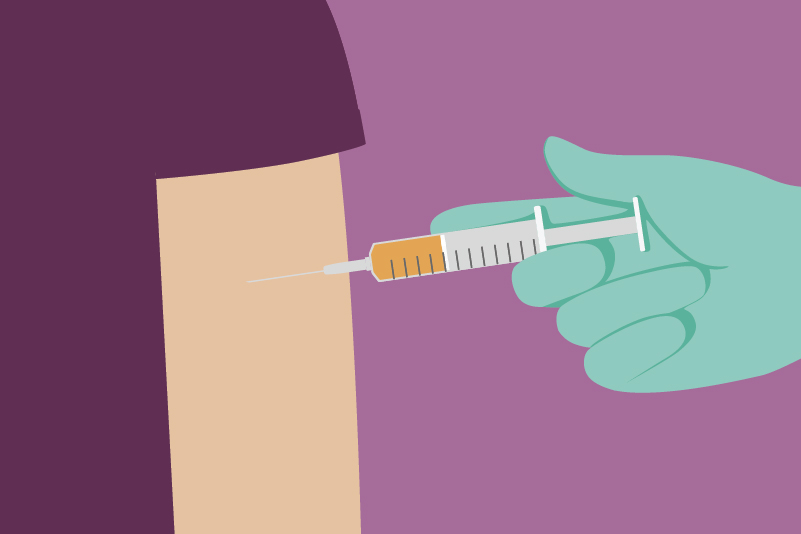#205 Preventing Painful Pokes: Decreasing Immunization Pain in Kids

Reading Tools for Practice Article can earn you MainPro+ Credits
Join NowAlready a CFPCLearn Member? Log in
- Most recent systematic review/meta-analysis: 10 randomized controlled trials (RCTs), 1,066 infants aged 1-12 months, versus various controls. Statistically significant reduced:1
- Cry duration by 38 seconds.
- Composite pain scores Standard Mean Difference (SMD)=1.7 (“large” effect).
- Example:2 Severe pain on infant pain score, 16% versus 75% (control), Number Needed to Treat (NNT)=2.
- Other systematic reviews found similar.3,4
- Two Systematic reviews:4,5
- “Distress” (13 RCTs, 1,424 children age <3 years):1 SMD=0.91, (probable “large” effect).
- Example:6 Children who cried after vaccination, 7% versus 22% (placebo), NNT=7.
- Pain (ages 4-11); three RCTs (n=269): No effect.4 But, if remove highest risk-of-bias study, SMD=0.47 (“moderate” effect).
- Example:7 Clinically significant pain, 17% versus 43% (placebo), NNT=4.
- On 100-point pain scale: Topicals 17 points better than placebo (two RCTs, n=253).7
- “Distress” (13 RCTs, 1,424 children age <3 years):1 SMD=0.91, (probable “large” effect).
- Most recent systematic review:8
- No significant difference in cry duration or composite pain scores (six RCTs, 520 children aged 1-4).
- One RCT (n=472) found fewer children had severe pain scores: 36% versus 64%, NNT=4.
- Inconsistent effects also in other reviews.1,4
- Three systematic reviews (1-4 RCTS, 90-456 patients):9-11
- Five of 9 outcomes positive, with “moderate-large” effect,3,4 (SMD 0.49-0.84).
- Example:12 One RCT, pain scale out of 5 (lower worse): 4.3 video versus 1.9 control.
- Five of 9 outcomes positive, with “moderate-large” effect,3,4 (SMD 0.49-0.84).
- Pre-medicating with oral pain relievers and reassurance/verbal distraction by parents does not reduce pain.4,11,13
- Further information on injection technique to minimize pain and resources for parents available online.14















New learning point; no,benefit from dextrose solution. Re-inforced knowledge on breastfeeding.